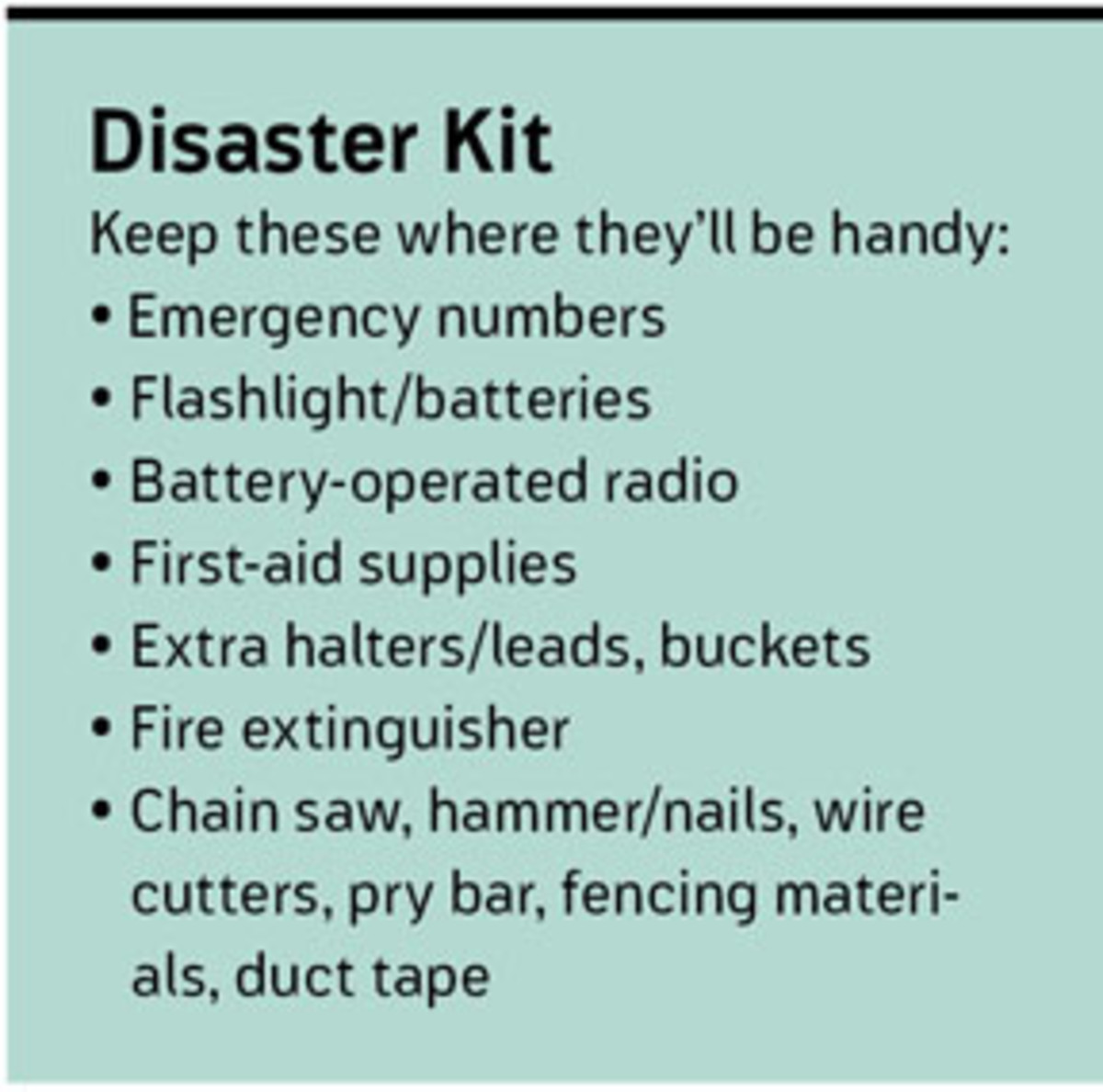
Spring and summer can bring disastrous weather. Depending on where you live, thunderstorms, tornadoes, and hurricanes can generate heavy rains, destructive winds, and the possibility of flooding. For peace of mind, prepare in advance to keep your horses safe, using the information below to create a written plan.
To Do Now
Form a support network. Contact local groups (county emergency teams, humane organizations, agriculture extension agents) and larger agencies (such as FEMA and the Coast Guard) to learn what help is available in your area. Network with neighbors and horse-owner coalitions. Create a list of emergency contact numbers.
Troubleshoot feed/water needs. In severe storms, roads and bridges can wash out and power can fail. Will you have adequate stores of feed? Alternate water sources if necessary? Brainstorm your back-up strategies now.

Plan a potential evacuation. Know where you’d take your horses in the event you must move them from your property—the local fairgrounds? A friend’s place? Do you have a rig adequate for the job, and will your horses load willingly? Plan the route you’d take, bearing in mind potential washouts and the flow of traffic from others’ evacuations.
Consider ID methods. Whether you move your horses or keep them at home during a dangerous storm, you should identify them in advance. Permanent methods include tattoos, brands, and microchips; you may also want to plan to place your phone number right on your horses by etching hooves, clipping into the coat, marking with waterproof paint (e.g. livestock marking crayon), braiding tags into manes or tails, or applying neck or fetlock bands.
Consider creating ‘high ground.’ You can haul in landfill to build a mounded-up area where your horses can escape deep water.
Stockpile sandbags. If you’re not in an incorporated area, emergency supplies may not be available to you from authorities. If you might need sandbags, gather them in advance (try sandbagexpress.com), along with the plastic tarp or sheeting you’ll need to create walls with the bags. (You can fill the bags, when needed, with sand from your arena, or order sand or gravel for delivery—in advance of critical need.)
When a Storm Threatens
Get ready. Bring in enough hay, feed, and bedding for 1 to 2 weeks. Store as much feed up off the ground as possible, to keep it dry. Apply ID to your horses per your plan; keep identifying records on hand in a watertight envelope to take with you at need. Gas up your towing vehicle; hitch your trailer. Check with local authorities regarding evacuation guidelines for large animals.
Leave promptly. If planning plus the storm’s predicted severity point to evacuation, don’t delay your departure. If there’s flooding, depending on the cause, water levels can rise many feet in a matter of hours or even minutes. Go while you can, taking at least some feed and water with you.
Turn out stay-at-homes? If you can’t or choose not to evacuate, you must decide whether to secure your horses within a shelter or turn them out. An open field with safe fencing and no overhead electrical wires is generally safer than a barn that might collapse or trap horses in rising water. Ideally, the pasture would have low areas where horses can shelter during the storm, plus higher ground to escape flooding. Leave out extra hay and make sure drinking water is available (don’t rely on automatic waterers).






